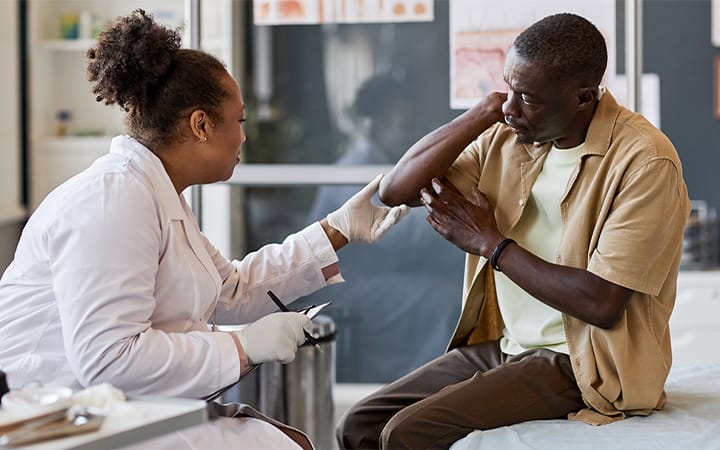The Signs of ALS and Why Early Detection Matters
August 19, 2025

Early diagnosis of amyotrophic lateral sclerosis (ALS), the progressive movement disorder, can be very beneficial for patients and their families. While there’s no cure for the disease, early diagnosis enables supportive care and medication that can slow the progression of ALS for some patients.
“In the early stages, ALS will look very similar to other common causes of muscle weakness,” says neurologist Komal Sawlani, MD, director of University Hospitals ALS Multidisciplinary Clinic. “The sooner we can monitor symptoms, the sooner we can make an accurate diagnosis and treatment plan.”
What Is ALS?
ALS, also called Lou Gehrig’s Disease for the famous baseball player whose life was cut short by the disease, causes neurons that control motor function to degenerate and die. People eventually lose the ability to control muscle movement. It can affect the ability to speak, swallow, breathe and walk.
When patients show early symptoms, doctors usually need time to monitor for a pattern that points to ALS, Dr. Sawlani says. “It can be a process, and it depends on what the symptoms are and where they are. Some patients present with weakness in an arm or leg. Some present with weakness in speaking or swallowing muscles first.”
Causes Unknown
The cause of ALS isn’t known. Most people develop ALS between ages 40 and 70. It’s more common in men, but the incidence is equal in older men and women.
There may be environmental factors. People who have served in the military have a higher rate of ALS for reasons that are unknown. “There has been lots of research to understand why people develop ALS,” Dr. Sawlani says. “The more we understand, the better we can make our drug targets, or hopefully one day we will have a cure or can stop the disease progression.”
Genetic Link
Doctors are learning more about genetic mutations associated with ALS. About 10 percent of cases are linked to known genetic mutations, but the true number is likely higher. Doctors will ask about family history and offer genetic testing for patients diagnosed with ALS, Dr. Sawlani says.
A breakthrough came in 2023, when the Food and Drug Administration (FDA) approved a targeted drug therapy for patients with a gene mutation that’s associated with ALS. The new drug, called tofersen, is not a cure but can slow progression of the disease for patients with the SOD1 gene.
“For three of the most common genes we know are associated with ALS, we either have clinical trials or one treatment for it that is different than any other treatment for ALS,” Dr. Sawlani says. Other, non-genetically targeted drugs are also used to slow down disease progression and manage symptoms.
Diagnosing ALS
A series of tests are required to confirm ALS and rule out other causes. Tests include MRI, nerve-conduction studies and electromyography, which measures electrical activity in muscles in response to nerve stimulation.
When patients are diagnosed, specialty clinics help address patient needs and challenges. Services may include physical therapy, occupational therapy, a social worker, dietitian and pharmacist. Support is also available from the ALS Association.
“There’s a real heartbreak for us when we meet patient and their families when they’ve had a long time of suffering with the disease without support around them,” says Dr. Sawlani.
Related Links
At University Hospitals Neurological Institute, a team of nationally recognized neurologists and neurosurgeons deliver comprehensive, coordinated care for conditions of the brain and nervous system.
Tags: ALS, ALS, Brain Health, Komal Sawlani, MD


